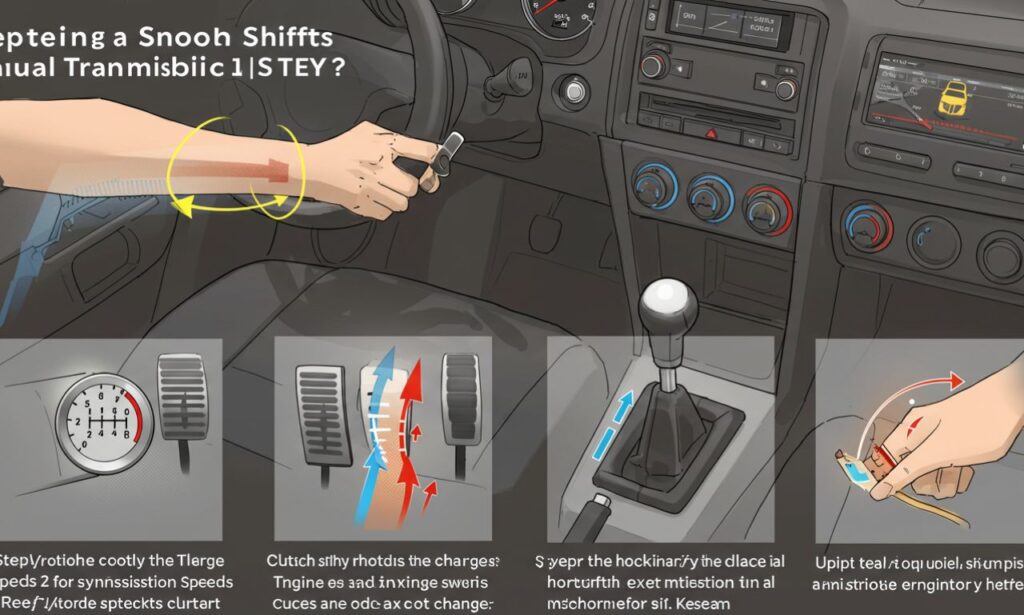Switching 2nd gear, often referred to as “shifting to second,” is one of the most crucial skills for both new and experienced drivers. This gear change happens early in acceleration and plays a vital role in maintaining control, speed, and engine efficiency. Whether you drive a manual car or ride a motorcycle, knowing when and how to switch to 2nd gear correctly can improve performance, reduce wear on the transmission, and make driving smoother and safer.
In this guide, we’ll explore the fundamentals of switching to 2nd gear, the mechanics behind it, common mistakes, and expert tips for perfecting your gear shifts.
Understanding the Role of 2nd Gear
Why 2nd Gear Matters
The 2nd gear serves as the bridge between the slow, powerful motion of 1st gear and the faster, more efficient movement of higher gears. It provides the right balance between torque and speed, enabling smooth acceleration without overloading the engine.
When used correctly, switching 2nd allows for:
-
Controlled acceleration in traffic.
-
Better traction on slippery surfaces.
-
Reduced strain on the clutch and gearbox.
-
Improved fuel efficiency in early motion.
How 2nd Gear Works in Manual Transmission
In a manual vehicle, gear changes rely on the coordination between the clutch, gear lever, and engine revolutions. 1st gear provides maximum torque to get the car moving, but it quickly becomes inefficient as speed increases. Shifting to 2nd reduces torque slightly while allowing the vehicle to accelerate more efficiently.
The key is timing — shifting too early can cause the engine to struggle, while shifting too late may over-rev it, leading to wear or damage.
The Mechanics Behind Switching 2nd Gear
Step-by-Step Process for Cars
-
Accelerate Gently in 1st Gear: Allow the car to move smoothly until the engine reaches about 2,000–3,000 RPM (depending on your car model).
-
Depress the Clutch Pedal Fully: Push the clutch pedal all the way down to disengage the engine from the wheels.
-
Move the Gear Lever to 2nd: Glide the gear stick from 1st into the 2nd gear slot without forcing it.
-
Release the Clutch Smoothly: Gradually release the clutch pedal while simultaneously pressing the accelerator.
-
Maintain a Steady Speed: Once in 2nd gear, continue accelerating or cruising depending on traffic and road conditions.
Switching 2nd on Motorcycles
For motorcycles, the process involves using the clutch lever, foot gear shifter, and throttle control.
-
Start in 1st Gear: Begin moving forward and allow the engine to rev moderately.
-
Close the Throttle Slightly: Ease off the throttle to prepare for the shift.
-
Pull in the Clutch: Disengage power to the rear wheel.
-
Shift Up to 2nd Gear: Use your left foot to lift the gear lever upward once.
-
Release the Clutch Smoothly: As you open the throttle, release the clutch to avoid jerky motion.
Mastering this coordination ensures a seamless transition that prevents loss of control and maintains balance.
Common Mistakes When Switching 2nd
Even experienced drivers occasionally mishandle the transition to 2nd gear. Here are the most frequent errors and how to fix them:
1. Releasing the Clutch Too Quickly
Letting go of the clutch too fast can cause the car to jerk or stall. The key is to release it gradually, especially at low speeds.
2. Shifting Too Early or Too Late
Switching 2nd too soon can make the engine struggle, while doing it too late can over-rev and wear out the components. Watch your tachometer and listen to the engine’s sound for cues.
3. Forgetting to Match Speed and RPM
If the engine and wheel speeds aren’t synchronized, you’ll experience rough shifts. Smooth gear changes rely on matching revs to the speed of the vehicle.
4. Poor Hand or Foot Coordination
Manual driving requires timing and rhythm. Practice helps align clutch control, accelerator pressure, and gear lever movement.
5. Holding the Gear Lever
Resting your hand on the gear lever adds unnecessary pressure on the gearbox’s internal components, leading to wear over time.
The Importance of Clutch Control in Switching 2nd
The clutch is the heart of manual transmission control. When switching 2nd, clutch management determines how smooth and efficient the shift will be.
Clutch “Bite Point” Awareness
The bite point is where the clutch plates begin to engage. Knowing this point helps prevent stalling and jerky starts. During the shift, balance between clutch release and accelerator input is crucial.
Avoiding Clutch Riding
Some drivers keep partial pressure on the clutch pedal, known as “riding the clutch.” This habit leads to premature wear and poor fuel efficiency. Keep your foot off the clutch when not shifting.
Switching 2nd in Automatic Transmissions
While modern automatic vehicles handle gear changes seamlessly, understanding when your car shifts to 2nd can still help improve driving performance.
Automatic Gear Shifting
In automatic transmissions, sensors and hydraulic systems determine the optimal time to shift. However, factors such as acceleration rate, throttle pressure, and load can affect when the vehicle switches gears.
Manual Mode or Paddle Shifters
Many new automatics feature a manual mode or paddle shifters, giving drivers control over when to engage 2nd gear. This is especially useful in conditions requiring more torque, like uphill climbs or towing.
When to Switch 2nd Gear
Knowing the right time to switch 2nd gear depends on your vehicle type, road conditions, and engine speed.
In Cars
Generally, shift to 2nd gear between 10–20 km/h (6–12 mph), or when the tachometer reads around 2,000 RPM.
In Motorcycles
For motorcycles, shifting around 15–25 km/h (9–16 mph) maintains smooth acceleration.
Special Situations
-
Hill Starts: Use 2nd gear only after gaining enough momentum to prevent rolling back.
-
Wet or Slippery Roads: Avoid aggressive shifts; gradual switching 2nd helps maintain traction.
-
Heavy Traffic: Short shifts at lower RPMs can improve comfort and fuel efficiency.
Advanced Techniques for Smooth Shifting
Rev Matching
Rev matching is an advanced technique that synchronizes engine speed with wheel speed during gear shifts. Before releasing the clutch in 2nd, slightly blip the throttle to raise RPMs to the right level. This creates an ultra-smooth transition.
Double Clutching
Common in older cars or performance driving, double clutching involves releasing and re-engaging the clutch twice to align gear speeds, reducing stress on the gearbox.
Progressive Throttle Control
Instead of abruptly pressing the accelerator after shifting, apply gradual pressure. This prevents jerky motion and conserves fuel.
Maintenance Tips for Smoother Gear Transitions
Proper maintenance keeps your transmission system in top condition, ensuring switching 2nd gear remains effortless.
1. Check Transmission Fluid Regularly
Low or dirty transmission fluid causes gear resistance and grinding. Always maintain the correct level and replace it as per the manufacturer’s recommendation.
2. Inspect the Clutch System
A worn clutch plate or faulty hydraulic system can make shifting difficult. Regular inspections prevent costly repairs.
3. Keep the Gear Linkage Lubricated
Dry or rusted linkage components can cause stiffness when changing gears. Lubricate moving parts for smoother motion.
4. Avoid Aggressive Driving
Frequent high-revving and abrupt gear changes accelerate wear. Smooth, deliberate shifts preserve your gearbox for years.
Safety Considerations When Switching 2nd
Maintain Focus
Avoid distractions during gear changes, especially in traffic or on bends. Smooth coordination requires attention.
Mind Vehicle Speed
Switching 2nd at inappropriate speeds can cause wheel slip, especially on wet surfaces. Adjust based on road traction.
Engine Sound Awareness
Your engine “talks” — learn to recognize when it needs to shift. A high-pitched whine often signals it’s time to move to 2nd.
Switching 2nd in Electric and Hybrid Vehicles
Electric vehicles (EVs) operate differently from traditional cars. Most EVs use single-speed transmissions, eliminating the need for switching 2nd gear. However, hybrids with manual or semi-automatic systems still require gear transitions at low speeds.
Manufacturers are experimenting with multi-speed EV gearboxes to enhance acceleration efficiency, which could reintroduce gear-switching concepts in future models.
Expert Tips for Mastering Switching 2nd
-
Practice in open, low-traffic areas until the process feels natural.
-
Always keep both hands on the steering wheel except during the shift.
-
Anticipate the need to switch early in city driving to avoid sudden gear changes.
-
In performance driving, use rev matching to preserve mechanical harmony.
-
Avoid skipping 2nd gear unless necessary for quick acceleration or overtaking.
Conclusion: The Art of Switching 2nd
Switching 2nd gear may seem simple, but mastering it transforms driving from mechanical action to a smooth, controlled experience. It’s the foundation of efficient manual driving and the stepping stone to understanding vehicle dynamics.
By combining clutch control, timing, and awareness, drivers can ensure seamless shifts that protect the engine, conserve fuel, and enhance comfort. Whether in a classic stick-shift car or a modern sport motorcycle, perfecting your 2nd gear transition is a mark of true driving skill.







